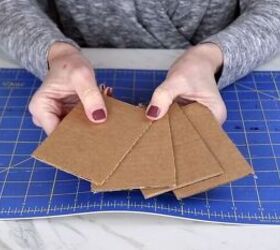

Gan WT, Xiao SL, Gao LK, Gao RN, Li J, Zhan XX (2017a) Luminescent and transparent wood composites fabricated by PMMA and γ-Fe 2O 4:Eu 3+ nanoparticles impregnation. Light Res Technol 14:31–46įink S (1992) Transparent wood-a new approach in the functional study of wood structure. Light Res Technol 47:192–209Ĭhauvel P, Collins JB, Dogniaux R, Longmore J (1982) Glare from windows: current views of the problem. Accessed 31 March 2008īorisuit A, Linhart F, Scartezzini JL, Münch M (2015) Effects of realistic office day lighting and electric lighting conditions on visual comfort, alertness and mood. Accessed Apr 2016īellia L, Cesarano AG, Iuliano F, Spada G (2008) Daylight glare: a review of discomfort indexes. Accessed Apr 2016īEDB (2016) Buildings Energy Data Book. The demonstrated 2–5 cm thick translucent wood composites exhibit great potential for application as a building wall material to capture outside environmental light, especially when combined with a pioneering 0.5 cm thick transparent wood rooftop.īDOE (2016) Buildings Department of Energy. Finally, a light intensity of 600 lux can be attained at a spot 10 cm from the 5 cm thick translucent wall, although the transmitted light intensity of the wall is only 20% of the environmental light. Moreover, unlike transparent wood rooftops, the light intensity inside the house model with translucent wood walls increases from rooftop to ground, and this increasing light intensity is beneficial to daily life. Although the transmittance of these materials is only 40%, the light intensity inside the house model with 2 cm thick translucent wood walls is more uniform and higher than that inside the house model with a 0.5 cm transparent wood rooftop in both the morning and afternoon of a sunny day as well as throughout overcast days, because the east, south, and west walls capture more light in the morning, at noon, and in the afternoon, respectively. However, if in doubt, do not use this paper, as PaperSource do not take any responsibility for damage to your printer and are only guided by information from manufacturers and customers who've had success printing on these papers.To efficiently harvest sunlight for consistent and uniform indoor lighting, an alternative solution is proposed by introducing 2–5 cm thick translucent wood composites as the wall material for a house model these composites are prepared by H 2O 2 steam delignification and infiltration with epoxy resin. Testing is always recommended for guaranteed results. ‡ Compatible with Laser and most Inkjet printers.

This property prevents leaves of onion skin paper from sticking to each other or other surfaces, a common problem with very light weight papers." Cockled paper has a slightly wavy, handmade feel to it, along with a mildly dimpled finish.

Image 1: Shows the paper with a black card under the sheetįrom Wikipedia: "The finish of onion skin paper is usually cockled, since it was air dried while it was being made. This versatile paper, is the perfect complement to your project and is a limited stock item. Layered folding, Origami, tearing, colouring and shape or edge cutting can offer an extra level of detail to your design. Unpatterned translucent papers are ideal for overlays on invitations, placecards, used as belly bands and bomboniere wraps, and scrapbook pages where you may require information to be seen over a non printable surface.
#Thick translucent paper skin
Onion Skin paper was used mainly as an "Airmail paper" due its gossamer and wispy thickness but was also used as typewriter paper, for calligraphy, architect drawings, train model builders, lampshade maker and was also known as Bible paper. Onion Skin paper is a White Translucent, hammered or cockled style paper, less translucent than a traditional vellum, but still allows you to see a filtered image of what is beneath.

Onion Skin paper is not actually made from onion it is similar to onion skin as it is white, translucent, and quite thin and how it got its name.


 0 kommentar(er)
0 kommentar(er)
